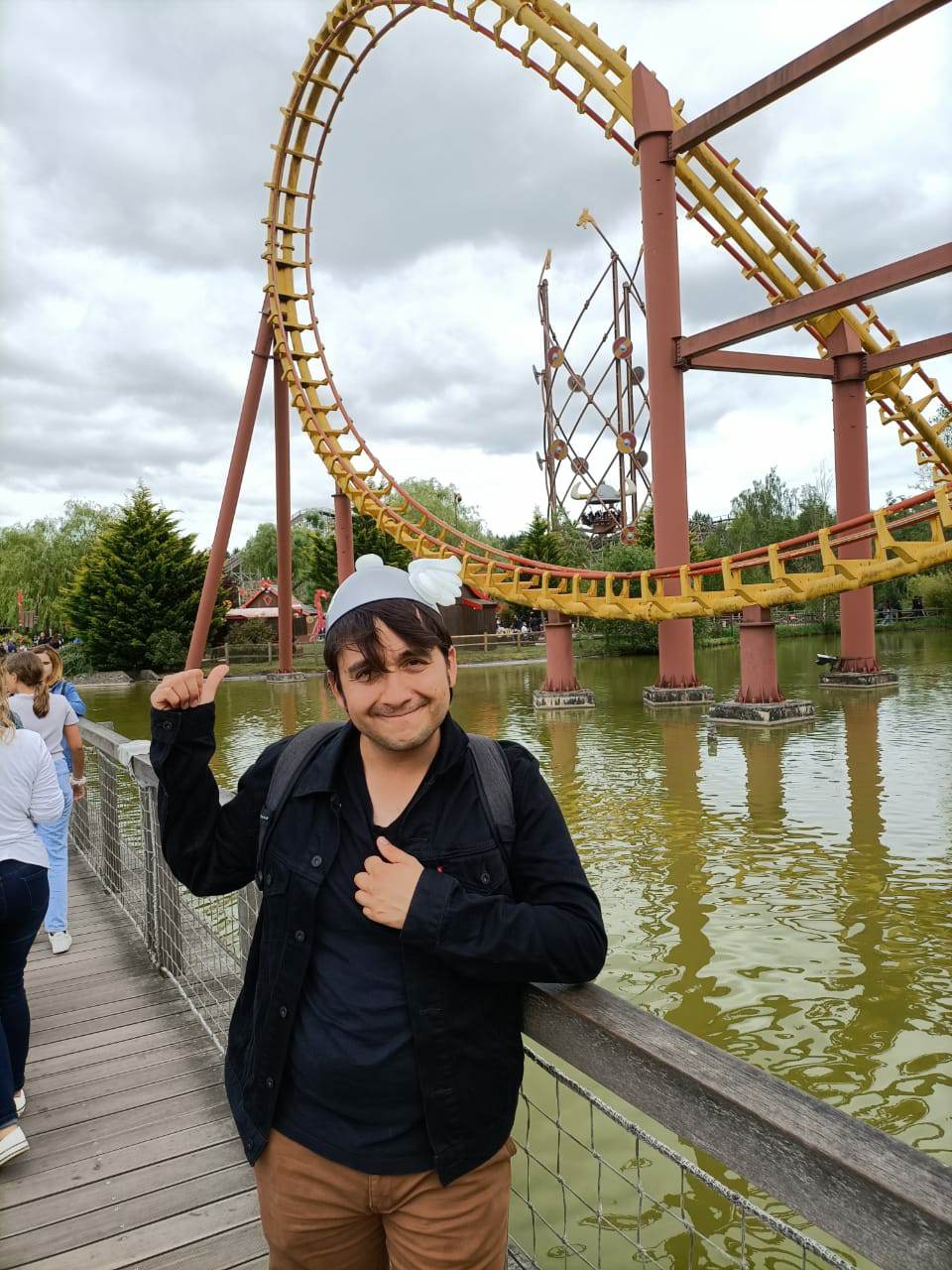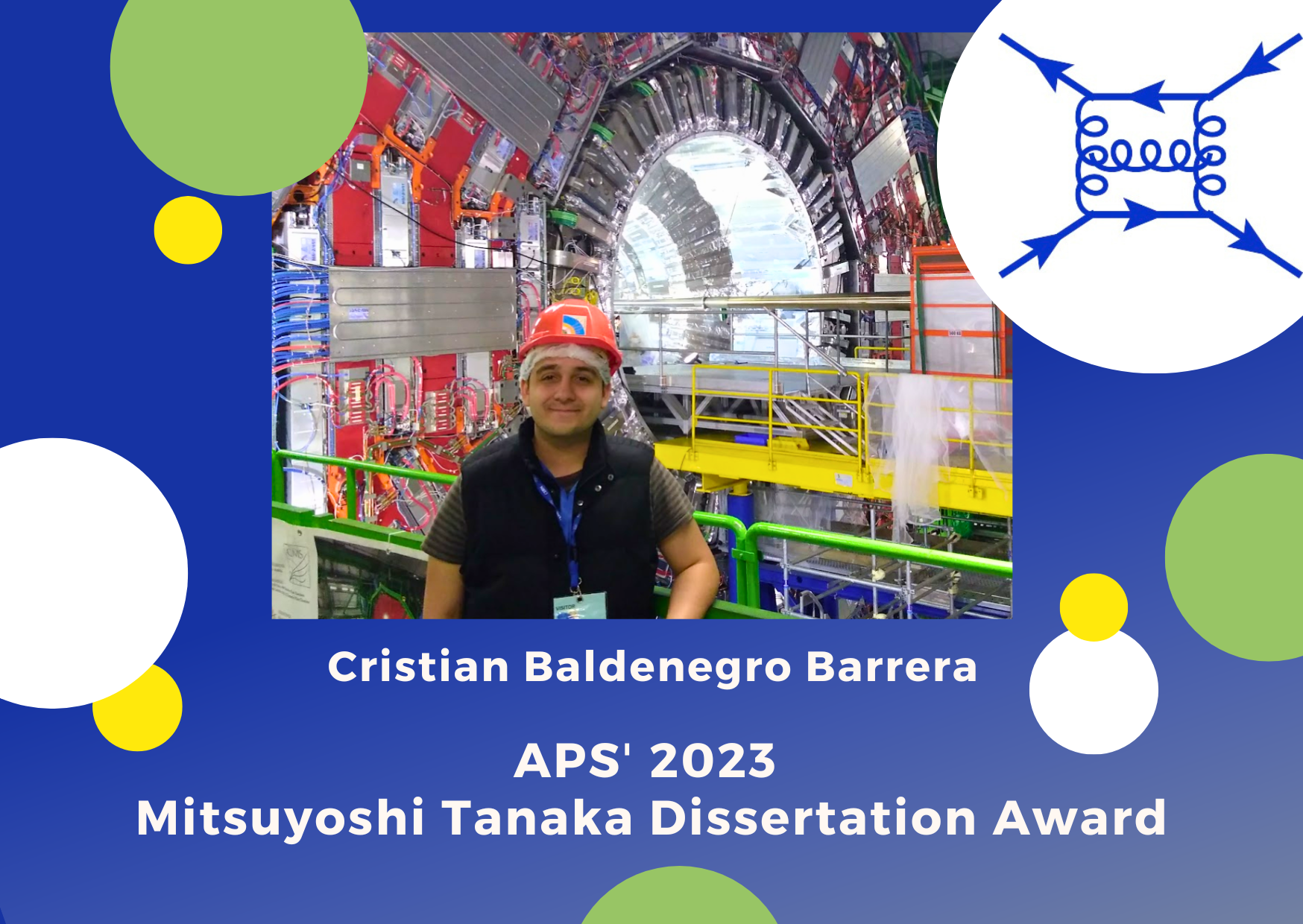We are going through another year full of recognition and awards for our brilliant scientists! This year a CMS postdoc, Cristian Baldenegro Barrera, received the Mitsuyoshi Tanaka Dissertation Award in Experimental Particle Physics by the American Physical Society. Why? “For his outstanding work on the measurement of strongly interacting color-singlet and photon exchange in proton-proton collisions at the LHC and development of the Forward Physics Monte Carlo (FPMC) generator”, according to the committee. If you don’t know what exactly that means, then keep reading, because Cristian will break it down for you!
Cristian, tell us a few things about yourself.
I grew up in Santa Ana, a small town in the desert of Sonora in the Northwest of Mexico. I earned my bachelor’s degree in Physics (Licenciatura en Física) at Universidad de Sonora. Then, I did my Ph.D. in Physics at the University of Kansas in the U.S. doing research with the CMS and TOTEM Collaborations, as well as collaborating with phenomenologists to study the sensitivity to manifestations of physics beyond the standard model at the LHC. I am currently doing my postdoc at the Laboratoire Leprince-Ringuet at École Polytechnique in France, working on jet substructure measurements with the CMS experiment. In my free time I like to play video games, listen to podcasts, go to art museums, and life drawing.
Can you describe the project for which you got awarded?
My Ph.D. thesis covered two aspects of particle physics. The first one is related to the study of the interactions of quarks and gluons, which is described by quantum chromodynamics (QCD).
I did a couple of measurements using highly collimated sprays of particles, known as jets. While quarks and gluons cannot be observed in isolation due to the confinement properties of the strong interaction, jets can be used as a proxy for the high energy quarks and gluons that are produced in proton-proton collisions, and thus learn more about the strong force. What I studied is the production of jets in a very special topology: one jet detected on one side of the CMS detector and another jet on the opposite side, with no particles detected in between them. This “jet-gap-jet” topology is deceivingly challenging to be described theoretically. The reason is that the probability that quarks and gluons radiate other gluons is essentially one, i.e. quarks and gluons LOVE to radiate gluons. A mechanism that can be used to explain this special jet-gap-jet topology is known as color-singlet exchange, essentially two-gluons exchanged in a way that they neutralize the color charges of each other. This can be used to test our understanding of the strong force in detail. Our measurement shows that the fraction of dijets produced with this color-singlet exchange mechanism is about 0.7%. This sounds like a small number, but when you consider how many jets are produced at the LHC, there’s actually quite a large number of them! We also did the measurement by considering collisions with one intact proton detected with the Roman pot detectors of the TOTEM experiment, which helps us control the effect of multiple parton interactions. This is one of the few LHC measurements that uses data from two completely independent experiments using the same proton-proton collisions.
The other aspect of my thesis project had to do with assessing the discovery potential of physics beyond the standard model at the LHC with two-photon fusion processes.
Since photons are color and electrically neutral, protons can emit them and remain intact as well. By tagging two intact protons at high energies, one can study photon-photon collisions at the TeV scale. What I did was to carry out a set of phenomenology studies to assess the sensitivity to physics beyond the standard model using these two-photon fusion processes. For example, one of the studies we did was to assess the sensitivity to new particles coupled to the electromagnetic field. This was work done in collaboration with theorists which resulted in direct implementations of new physics processes in a Monte Carlo event generator known as FPMC. These have been used by CMS and ATLAS for searches for physics beyond the standard model in these special purely photonic interactions at high energies.
It's a huge honor to have this distinction by the American Physical Society.
What inspired you to become a particle physicist?
When I was in high school, I started reading a blog called “El Tamiz” written by Pedro Gómez-Esteban González. The blog is written in Spanish and is about all sorts of physics topics explained in a highly accessible way. In that blog, there is a series called “Esas maravillosas partículas” (Those wonderful particles), which covers the basics of particle physics. That seeded my interest in particle physics.

I got a more serious interest after attending a school of particle physics in Hermosillo, Sonora, Mexico (Escuela de Física Fundamental). Professor María Elena Tejeda-Yeomans encouraged junior undergraduate students to attend this school to be exposed to all these topics, even if the school was targeting mostly master and Ph.D. students. I really, really enjoyed it, even though I could not understand much! So I’m very grateful for having been given that opportunity. Since then, I started to lean more towards fundamental physics (cosmology, particle physics, nuclear physics).
Do you have any future plans/goals regarding your career?
I want to keep doing experimental particle physics research! Right now, I’m very invested in understanding the emergent properties of the strong interaction using jet substructure with the CMS experiment. I am currently working on mapping out the structure of high transverse momentum jets in a two-dimensional representation known as the Lund jet plane. These jet substructure tools can also be used to do an effective tomography of the quark-gluon plasma droplet created in ultrarelativistic heavy-ion collisions, which I am working on in collaboration with my colleagues at the Laboratoire Leprince-Ringuet at École Polytechnique and Sapienza Università di Roma.
Down the line, there are also exciting projects in experimental high energy physics that I’m looking forward to. We have started collecting data at a larger center-of-mass energy and with prospects for larger amounts of integrated luminosity compared to what we had in Run-2 for proton-proton and heavy-ion collisions. This translates to probing the properties of Nature at even shorter distances and with better precision. In the not-so-far future, we will collect data during the High-Luminosity LHC era, where we will also have an effectively new detector to work with, new challenges in precision physics and searches for new physics, as well as new handles and large amounts of data to address long-standing questions in the field. Across the Atlantic, there will be the Electron Ion Collider at Brookhaven National Laboratory, which will allow us to have a multi-dimensional map of the internal structure of the proton and nuclei. I am quite interested in this as a possible future direction in my career as well in the long term.
If you had a teenager in front of you wanting to pursue a career in particle physics, what would you tell them?
Doing particle physics is incredibly satisfying and personally fulfilling. We have these wonderful (immense) data sets that have been calibrated collectively by the members of the CMS Collaboration, and we get to “play” with these data to learn more about Nature. It is really thrilling to use our physical intuition to explore this data in creative ways. It may sound odd, but to me it feels very much like I am playing with Play-Doh 🙂 It definitely requires a lot of work (and perseverance), but it is highly rewarding work. In addition to the work itself, I get to travel around the world, meet people from different cultural and scientific backgrounds than mine, use creativity to solve problems, and devote a lot of my time to think about Physics. All in all, I am quite happy, and if people are considering a career in research, in my opinion you should pursue it.
Disclaimer: The views expressed in CMS blogs are personal views of the author and do not necessarily represent official views of the CMS collaboration.

